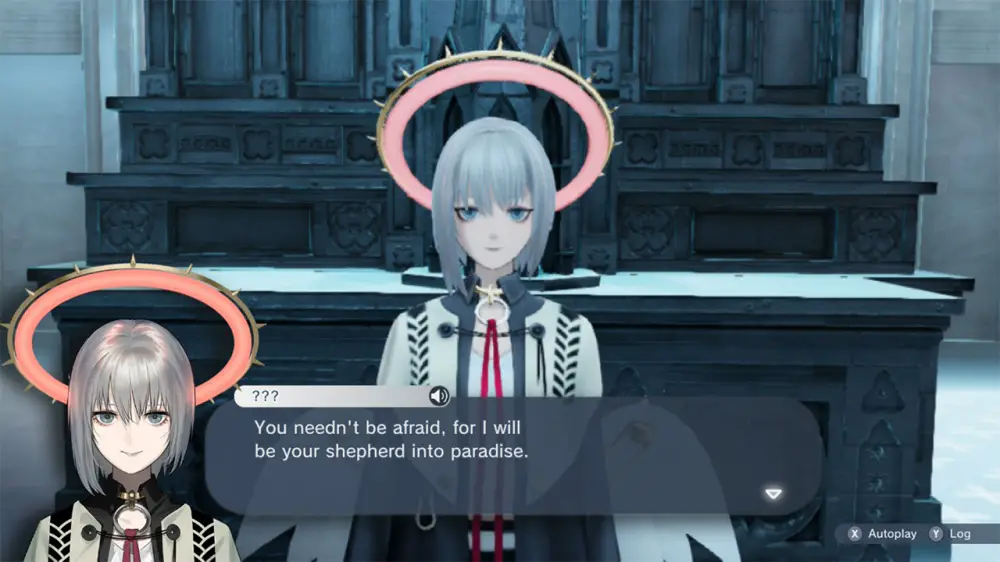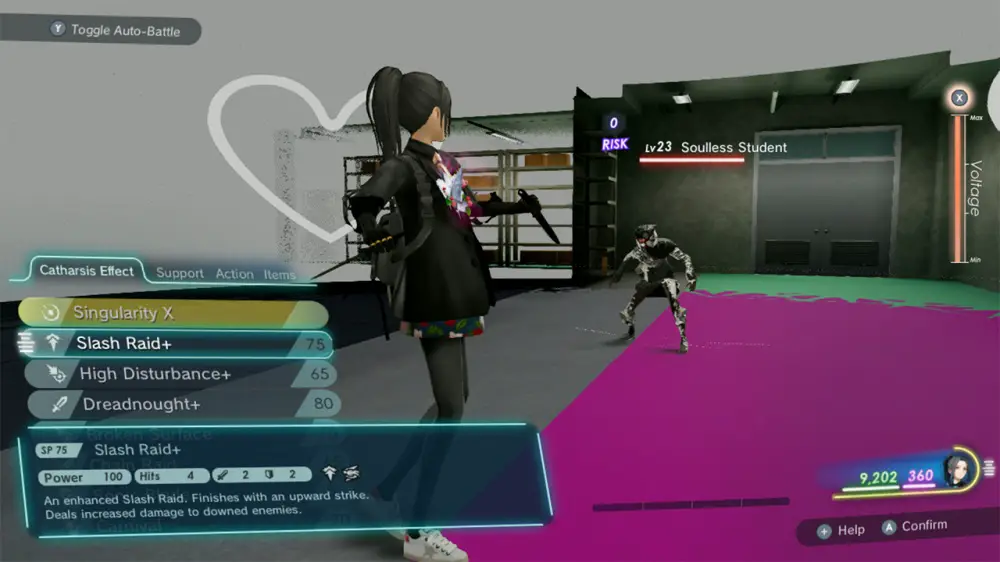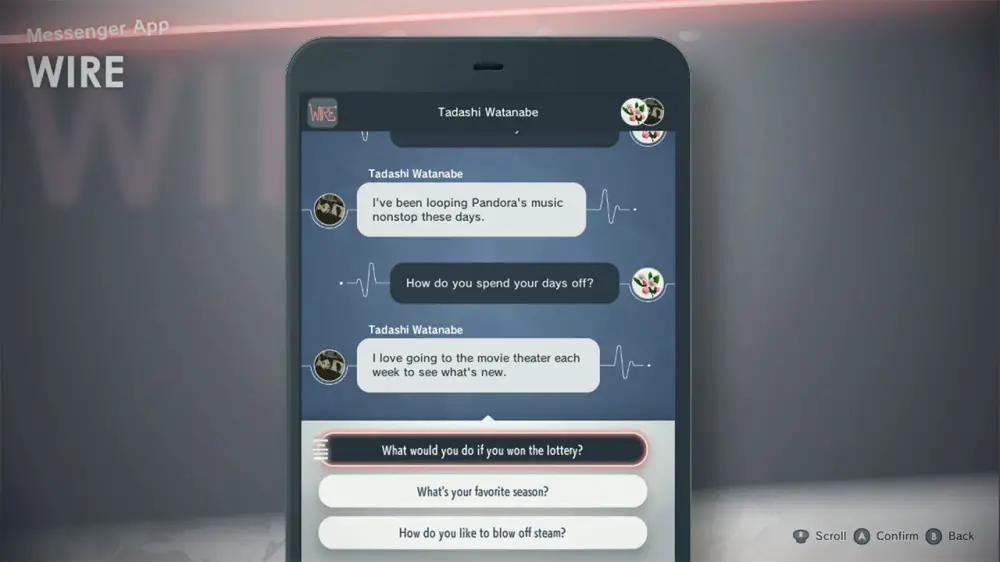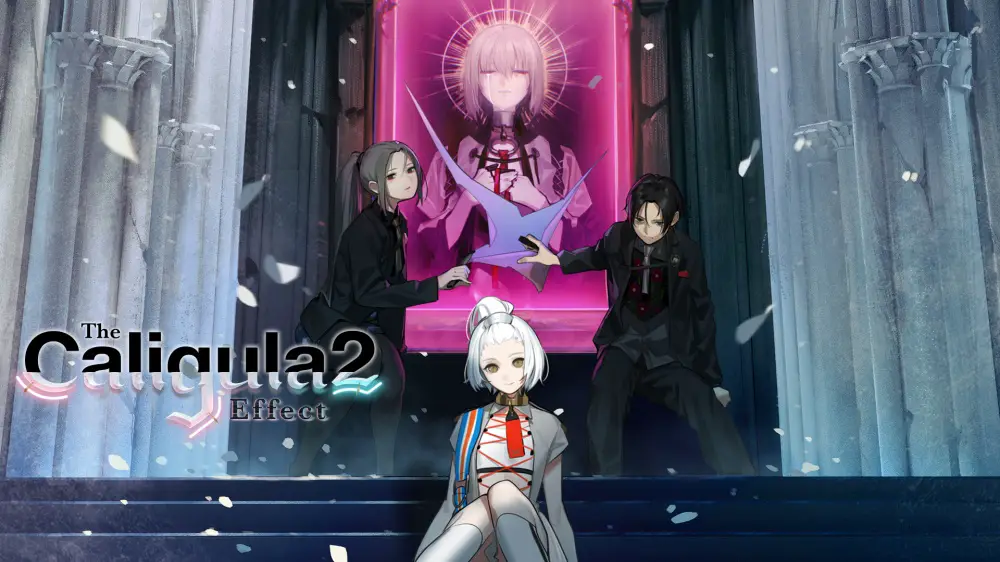The first Caligula Effect came out on PS Vita – with a later, improved Overdose Edition for Switch, PS4 and PC. Unlike its predecessor, The Caligula Effect 2 isn’t a PS Vita re-release. It’s an entirely new adventure, specifically for PS4 and Switch. Its world is also different from that of the first – with only loose ties between them. So, that’s okay if you – like me – haven’t heard of the series before.
It’s A Simulation

Like the first game, The Caligula Effect 2 is set in a simulation world known as Redo. This is, however, a different Redo – though inspired by its previous version. Confusing, but bear with me. Redo, created by virtuadoll Regret, was to be a place where all will forget their regrets. But one day another virtuadoll, called X, appears, activating some glitch in the mainframe. Unaware of X, Regret and her chosen ones set out to fix this blimp – hopefully without affecting the world.
Little do they know that X has also set into motion something much greater: The awakening of the protagonist and their soon-to-be companions. Not only that, but X has also given them the power to see what is real; kind of like The Matrix, but anime. The protagonist’s task is then finding other awakened characters and stopping Regret’s generals before being found out.
As a sci-fi fan, the story was right up my alley. With its simulation universe – down to characters occupying the real world in, I guess, some sleep state – this might be the closest we’ll get to a Matrix RPG. The only downside is that the story quickly gets really confusing. Although, you’d definitely expect that from a JRPG.
Combat Effect

The gameplay in The Caligula Effect 2 is interesting, to say the least. What makes its turn-based combat different is that characters’ actions can be put on a schedule. So, after choosing an action, players get a premonition – Imaginary Chain – of how the battle will unfold. This gives them some control over who attacks when.
Adjusting actions on this timeline also involves linking attacks. Those occur when two characters attack in quick succession – before the enemy can respond. This doesn’t always work, as it requires exactly the right characters – from my experience. For example, the protagonist sending the enemy into the air allows Gin (one of the first recruits) to do a linking attack. But – this all depends on how the player sets things up beforehand. Unless Gin is attacking the same enemy, a linking attack can’t occur.

If combat doesn’t seem too complicated, you should keep in mind that every action uses points. Even the standard attacks use those, although less. When a character depletes these points, they cannot attack before recharging the points’ meter – which is a defensive ability. Depending on the chosen difficulty level, you may need to do this often or almost never. For a while, I didn’t even know this was a thing. I only realized this when one of my characters couldn’t perform any action – it was very awkward.
Dungeon Crawler
When I first saw The Caligula Effect 2, I thought it was an open-world RPG, Final Fantasy-style. I say it now; I was wrong. It’s more akin to a dungeon crawler, or some mission-based game with a hub world. Although this dampened my expectations – it actually worked in the game’s favor. It meant that there was nothing hampering story progression, like having to travel to the next town or something. Instead, I just had to get on a train to the next level whenever I was ready.

I liked this system: no more getting sidetracked with yet another side quest, until you find yourself in some town on the opposite side. It completely removed the need to complete those – so, I just went straight to the next story event. At the same time, it didn’t prevent players from doing side quests if they have to – it just made it non-mandatory for those who want to enjoy the main game.
Side Quests
If you’ve seen any screenshot or video featuring The Caligula Effect 2, then there’s one thing apparent: the game is set in a high school, with teenagers saving the world and whatnot. Side quests go hand-in-hand with this concept. I haven’t played many of those in The Caligula Effect 2, since they are the usual fetch that, fight this and so on – but less exciting. That’s not to say some players won’t enjoy them; I was just more interested in the story.

In addition to side quests, there are these little events players can watch with the main character and one of the party members. Those aren’t that important, but they help develop relationships between the protagonist and their companions. After viewing those, you can then text new questions to the characters. Honestly, I don’t know how this section was useful, besides getting to know your party better and possibly learning some secrets. Still, the process of using your phone and reading the texts seemed a bit too much. I mean, I can’t even be bothered to do that in real life; what makes you think I’d do it in a game?
Conclusion
It may sound like I didn’t really enjoy The Caligula Effect 2 – but, on the contrary, I did. The story is interesting, the characters are well-thought-out, the battle system is fun. While I didn’t do many side quests, I liked that they were there as an option. And with difficulty settings on offer, The Caligula Effect 2 can be enjoyed by all players, no matter their skill or their experience with turn-based games.
The Caligula Effect 2 is available now on PS4 and Switch. A review code was provided by NIS America.









